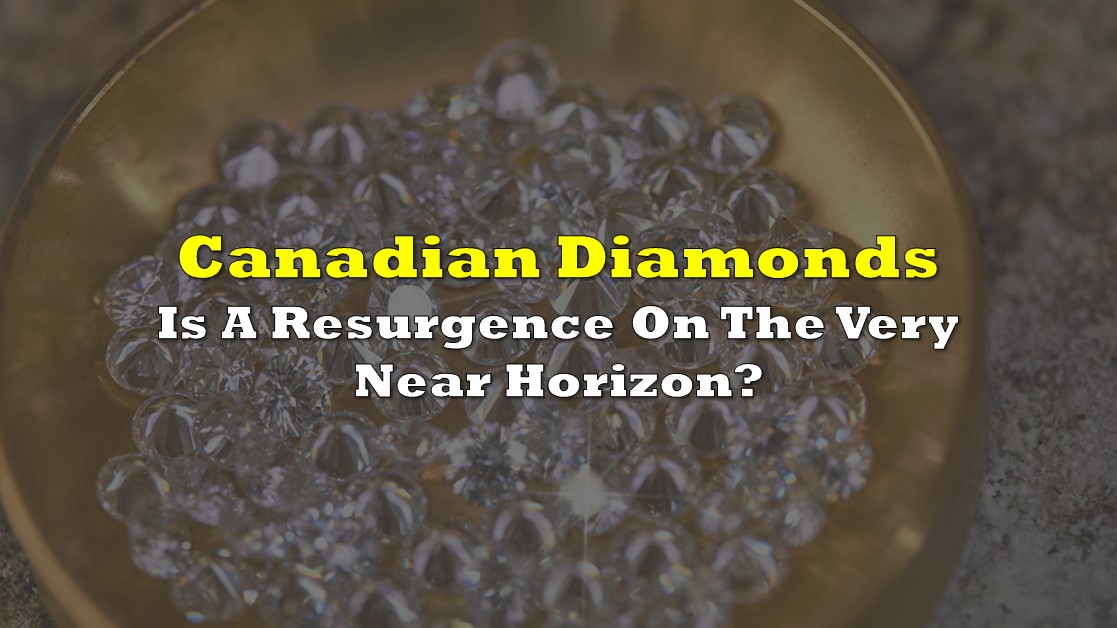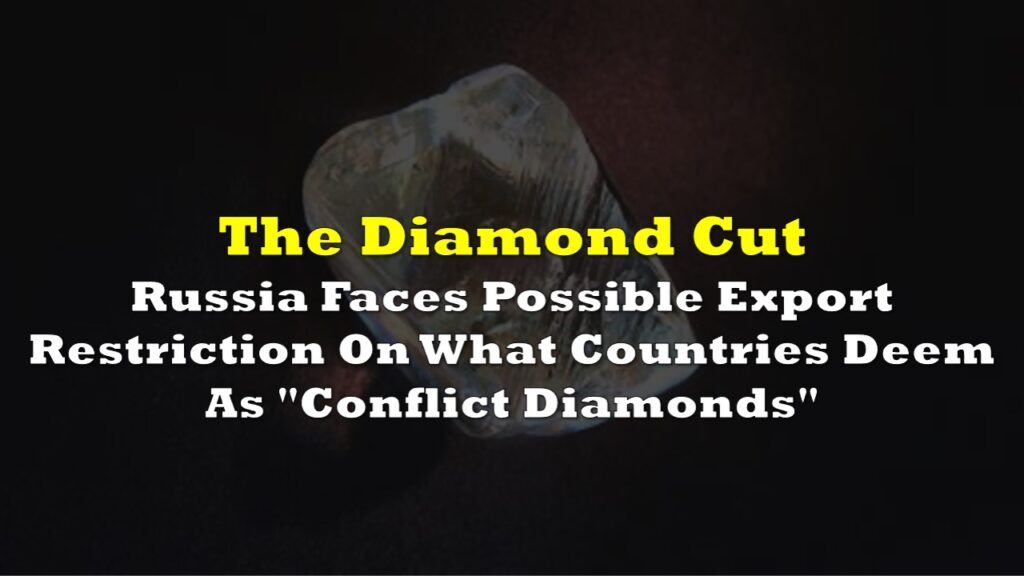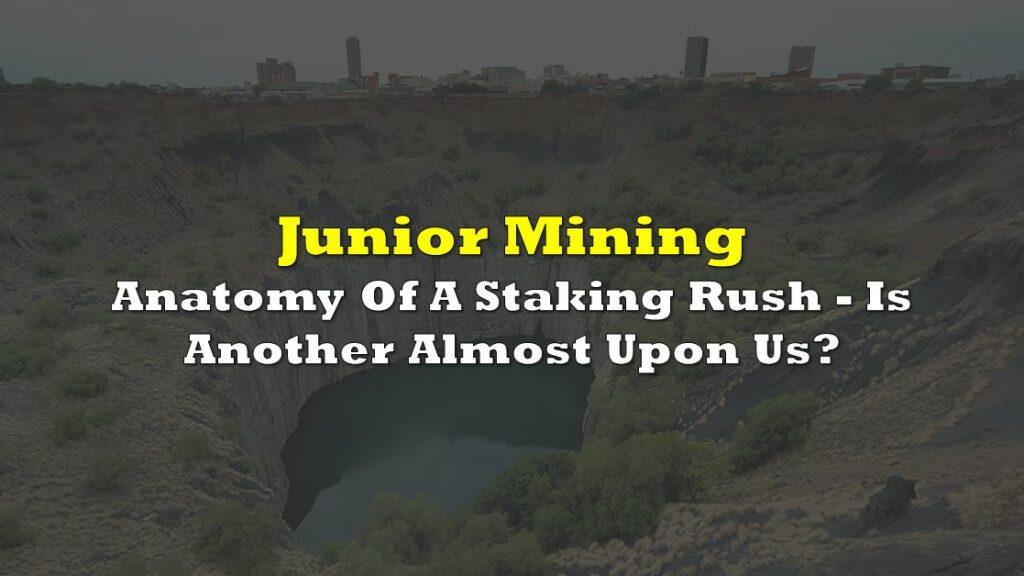The largest North American staking rush since the 1896 Yukon gold discovery occurred after the discovery of diamond-bearing kimberlite clusters in the Lac de Gras region of the Northwest Territories (NWT) in 1991. Geologists Dr. Charles Fipke and Dr. Stewart Blusson had been prospecting for diamonds throughout the 1980s, seeking to find the source of previously identified diamond indicator minerals by conducting extensive mapping, mineral sampling, airborne and ground geophysics.
In November of 1991, they found 81 small diamonds, and with that, the staking rush was on. By 2004, more than 28 million hectares of claims had been staked across NWT and Nunavut.
Dia Met Minerals, which was funding the exploration efforts, brought in mining giant BHP Billiton to expand the project. Along with Fipke & Blusson, the Core Zone joint venue was formed to advance the project. In August of 1998, the Ekati open-pit diamond mine commenced production, and Canada’s diamond industry was born.
The Canadian diamond mining industry has since grown significantly to become the world’s 3rd largest rough diamond producer. In 2019, Canadian diamond production accounted for 13.5% by volume and 12.5% by value of worldwide production, with Canadian diamond exports valued at $2.19 billion.
The Canadian Edge
Canadian diamonds are highly sought after due to their high quality, rigid industry environmental standards, and high level of labour productivity under conflict-free conditions. In Canada there are no concerns about “blood diamonds” produced under exploitative labour practices, which is too often the case in other diamond producing jurisdictions.
Canadian diamonds often have a Canada-themed logo, such as a maple leaf or polar bear, laser-inscribed, along with their certificate number. This certification process enables stones to be tracked throughout the entire mine-to-end-consumer supply chain, ensuring their integrity.
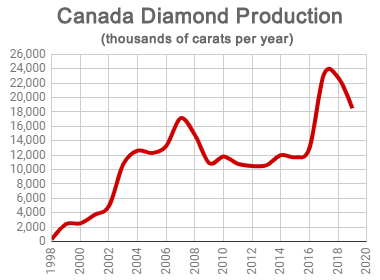
The Four Diamond Mines in Operation at Lac de Gras
- The Ekati Mine: Currently operated by the Arctic Canadian Mining Company Ltd, the mine has produced over 63 million carats since 1998. It’s best known for its premium gem quality diamonds, including a 186 carat diamond found in 2011, the largest diamond found to date at Ekati.
- Diavik Mine: Operated by Rio Tinto, this mine is located 36 kms to the east of the Ekati Mine. Diavik has produced over 100 million carats since mining commenced in 2003.
- Gahcho Kué: This De Beers open-pit operation entered into production In September 2016. It is the world’s largest new diamond mine, and is located 280 kms northeast of the NWT capital city of Yellowknife.
- Snap Lake: This mine commenced production in 2008, and is Canada’s only completely underground diamond mining operation. The $1.8 billion project was De Beers’ first diamond mine outside of Africa and is located 220 kms northeast of Yellowknife.
Quebec’s Only Diamond Producer
- Quebec’s Renard diamond mine entered production in 2017. Operated by Stornoway Diamonds (Canada) Inc. (OTC: SWYDF), it is located 350 kms north of Chibougamau in the province’s James Bay region and is Quebec’s only diamond mine. The project, which was constructed for $946 million, is expected to produce 1.6 million carats per year over its initial 14-year mine life.
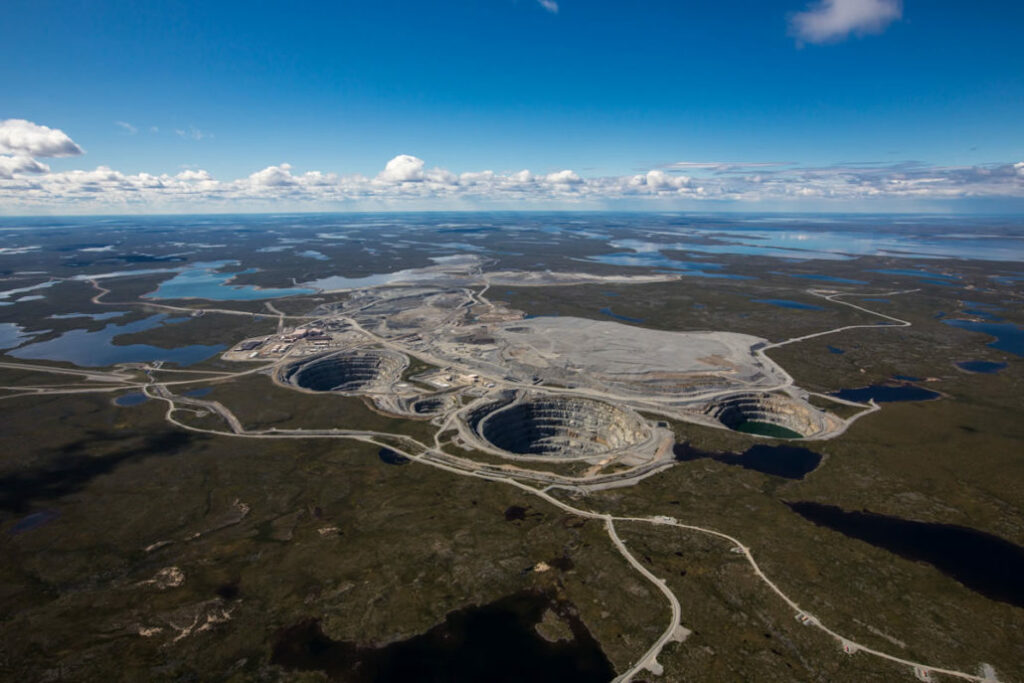
Mines In Development
- The Jericho Mine: Nunavut’s only producing diamond mine was developed by Tahera Diamond Corp. and produced 780,000 carats between 2006 and 2008. Tahera ran into financial difficulties due to high operating costs in a difficult environment, a high Canadian dollar, and a short operating season. It was purchased out of bankruptcy by Shear Diamonds Ltd. in 2010. A subsequent attempt to reopen the mine that year failed due to financing issues – and the mine was mothballed pending potential new investors willing to take on the project.
- The Chidliak Project: This potential mine was purchased from Peregrine Diamonds Ltd by De Beers in 2018, and they are now developing it. Chidliak is located on Baffin Island’s Hall Peninsula, approximately 120 kms from Nunavut’s capital of Iqaluit. To date, 71 kimberlites have been found at Chidliak. De Beers is continuing to explore and develop the project towards it successfully becoming a producer in the future.
The Diamond Industry in the NWT
The diamond industry has been a significant catalyst for NWT economic growth. It has provided many jobs, and much needed tax revenue & royalty payments for the territory. And is also a valued source of economic benefits to the regional First Nations communities.
There has been an emergence of downstream activity in NWT, such as the cutting and polishing of rough stones, jewelry design & manufacturing, and diamond retailing. These efforts have gone a long way towards creating a vertically integrated diamond industry in Canada. Typically, Canadian diamonds are initially sorted at the mine where they are valued to determine royalty payments. They are then sent off to the principal diamond centers in Antwerp, Belgium or London, England for final sorting – and then sold to buyers of rough diamonds.
Diamond Uses
Diamonds are considered to be the hardest mineral, as well as having the highest thermal conductivity of any material. These two qualities make them ideal both for industrial usage in cutting, grinding and drilling, and for usage in electronic devices to dissipate heat, such as in high tech membranes and electronic heat sinks. 70% of diamonds are used for industrial purposes.
Gem-quality cut diamonds are immensely popular around the world for use as jewelry and account for 30% of industry output.
The diamond market is dominated by the De Beers Group, which is involved in all aspects of diamond mining, production, trading, and distribution. It’s estimated they control 80-to-85% of the global diamond industry.
Arctic Star Exploration’s Great Potential
Exploration for diamonds has pretty much flown under the radar over the past decade, as investors have focussed more on gold, silver, lithium and battery metals (i.e. copper, nickel, cobalt, etc.). However, in 2021 Arctic Star Exploration Corp. (TSXV: ADD), which is developing its Diagras Diamond Project in the Lac de Gras region, discovered the Sequoia Kimberlite Complex. Surface geophysics mapping to date suggests this could potentially be the largest diamond-bearing formation in the Lac de Gras district. A small ground sampling program found two commercial-grade diamonds – and diamond chemistry analysis indicates the potential for large diamonds that are greater than 52 carats.
Historical chemical analysis of the indicator minerals from the Sequoia Kimberlite Complex found an abundance of Clinopyroxene and garnets. This unique chemistry is present with large, clear gems (greater than 50 carats) and can be a good predictor of their presence. The Lac de Gras field has had a population of these gems, but the only way to determine if Sequoia has a large population is to conduct a large bulk sample of greater than 1000 carats. Arctic Star believes this could be a possibility in 2023, depending on the analysis of results from its Spring 2022 program.
The Diagras Property appears to have significant upside potential. If Arctic Star’s future exploration programs can define and delineate the Sequoia Kimberlite Complex into a sizable, economically viable diamond field, it could attract the attention of one of the neighboring diamond producers looking to put the property into production.
In the interim, much work still needs to be done. Investors will be looking for indications the Sequoia Complex redefines what we know about the Lac de Gras diamond camp. If so, it could potentially become a major industry game-changer – perhaps even sparking another wild staking rush.
FULL DISCLOSURE: Arctic Star Exploration is a client of Canacom Group, the parent company of The Deep Dive. The author has been compensated to cover Arctic Star Exploration on The Deep Dive, with The Deep Dive having full editorial control. Not a recommendation to buy or sell. Always do additional research and consult a professional before purchasing a security.

